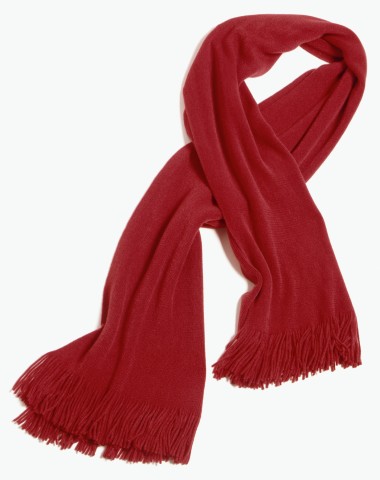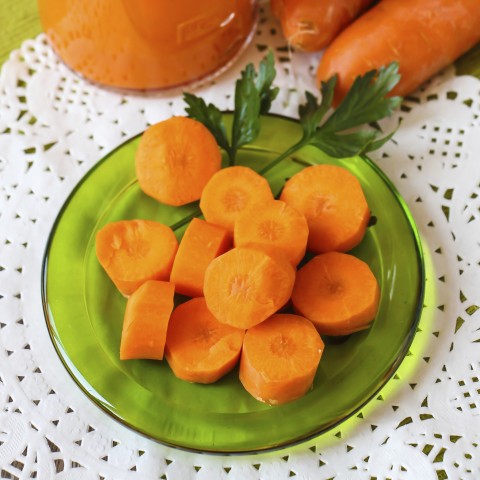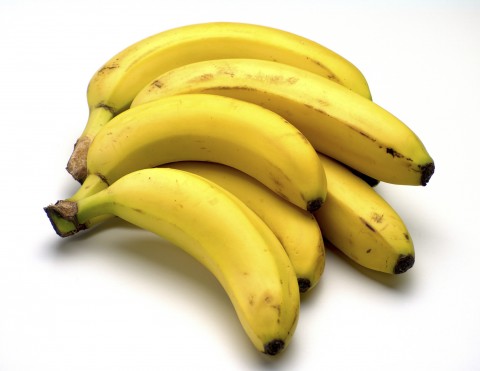
In Thai, if you want to tell the number or amount of a noun (both countable and uncountable), knowing the numbers and the most common nouns isn’t enough. Unlike in English, you need Thai numerical classifiers to complete the phrase or sentence. So, as a Thai learner, you need to learn about numeric classifiers in Thai in order to speak like a native.
In this lesson, we’ll introduce you to Thai numeric classifiers. You’ll also learn the structure of numerical classifiers in Thai along with how to use them. And lastly, we’ll provide you with a list of Thai classifiers. Start with a bonus, and download the Must-Know Beginner Vocabulary PDF for FREE! (Logged-In Member Only)
 Table of Contents
Table of Contents
- What are Thai Numeric Classifiers?
- Thai Numeric Classifiers for Living Things
- Thai Numeric Classifiers for Clothes and Accessories
- Thai Numeric Classifiers for Objects in the House
- Thai Numeral Classifiers for Stationery/Office Supplies
- Thai Numeral Classifiers for Musical Instruments
- Thai Numeral Classifiers for Food
- Thai Numerical Classifiers by Shape
- Conclusion
1. What are Thai Numeric Classifiers?
First, let’s break down some basic vocabulary you’ll want to know:
- ลักษณะนาม (lák-sà-nà-naam) is “numeric classifiers.”
- ลักษณะ (lák-sà-nà) is “characteristic.”
- คำนาม (kham-naam) or นาม (naam) is “noun.”
By combining the meanings of the last two words together, you can guess the function of numeral classifiers in Thai: they’re used to describe the physical characteristics of a noun.
1- Structure of numerical classifiers in Thai
In Thai, there are no plural numerical classifiers. Further, there’s no relationship between noun classes and classifiers. The main thing you need to remember is: Thai numeral classifiers are always put after nouns.
There are two ways of using numeral classifiers in Thai, shown below.
A. Noun + number + numerical classifiers
How to use: This structure is used to tell the amount or number of a noun.
Example:
หนังสือ 2 เล่ม
nǎng-sǔue-sǎawng-lêm
“Two books”
Additional note: If you want to change the sentence to a question, put กี่ (gìi) instead of a number.

B. This/That + noun + numerical classifiers
How to use: This structure is used to specify which noun you’re talking about.
Example:
หนังสือเล่มนั้น
nǎng-sǔue-lêm-nán
“That book”
Additional note: นี้ (níi) is “this” in Thai, and นั้น (nán) is “that.”
Now that you have some basic information about Thai numeral classifiers, let’s learn the most common Thai classifiers. The following section is a categorized list of these classifiers, along with examples of how they’re used in a sentence.
2. Thai Numeric Classifiers for Living Things
1- Humans
Thai numeric classifier: คน (khon)
Example 1:
เธอเชิญแขกมากี่คน
thooe-chooen-khàaek-maa-gìi-khon
“How many guests have you invited?”
Example 2:
เอาจดหมายไปให้ผู้หญิงคนนั้นหน่อย
ao-jòt-mhǎai-bpai-hâi-phûu-yhǐng-khon-nán-nàauy
“Give the letter to that woman.”
2- Animals
Thai numeric classifier: ตัว (dtuua)
Example 1:
พ่อเลี้ยงสุนัขไว้ 2 ตัว
phâaw-líiang-sù-nák-wái-sǎawng-dtuua
“My father has two dogs.”
Example 2:
แมวตัวนี้น่ารักมาก
maaew-dtuua-níi-nâa-rák-mâak
“This cat is very cute.”
3- Monks
Thai numeric classifier: รูป (rûup)
Example 1:
แม่นิมนต์พระมา 5 รูป
mâae-ní-mon-phrá-maa-hâa-rûup
“My mother invited five monks.”
Example 2:
พระรูปนั้นตัวสูงมาก
phrá-rûup-nán-dtuua-sǔung-mâak
“That monk is very tall.”
4- Angels and Buddha Statues
Thai numeric classifier: องค์ (ong)
Example 1:
เธอคิดว่าบนสวรรค์มีเทวดากี่องค์
thooe-khít-wâa-bon-sà-wǎn-mii-thee-wá-daa-gìi-ong
“Do you wonder how many angels there are in heaven?”
Example 2:
พระพุทธรูปองค์นั้นงดงามมาก
phrá-phút-thá-rûup-ong-nán-ngót-ngaam-mâak
“That Buddha statue is very beautiful.”
5- Monsters and Hermits
Thai numeric classifier: ตน (dton)
Example 1:
ในนิยายเรื่องนี้ มีฤาษีอยู่ 1 ตน
nai-ní-yaai-rûueang-níi mii-ruue-sǐi-yùu-nùeng-dton
“There is one hermit in this novel.”
Example 2:
ปีศาจตนไหนน่ากลัวที่สุด
bpii-sàat-dton-nǎi-nâa-gluua-thîi-sùt
“Which monster is the scariest one?”
6- Trees
Thai numeric classifier: ต้น (dtôn)
Example 1:
ในสวนมีต้นไม้หลายต้น
nai-sǔuan-mii-dtôn-mái-lǎai-dtôn
“There are many trees in the garden.”
Example 2:
ต้นไม้ต้นนั้นสูงเท่าไหร่
dtôn-mái-dtôn-nán-sǔung-thâo-rài
“How tall is that tree?”
7- Flowers
Thai numeric classifier: ดอก (dàawk)
Example 1:
แม่ซื้อดอกไม้มา 5 ดอก
mâae-súue-dàawk-mái-maa-hâa-dàawk
“My mother bought five flowers.”
Example 2:
ฉันชอบดอกไม้ดอกนั้นมาก มันชื่ออะไร
chǎn-châawp-dàawk-mái-dàawk-nán-mâak man-chûue-à-rai
“I really like that flower. What is it called?”

8- Leaves
Thai numeric classifier: ใบ (bai)
Example 1:
เธอจะให้ใส่ใบไม้ในตระกร้ากี่ใบ
thooe-jà-hâi-sài-bai-mái-nai-dtrà-grâa-gìi-bai
“How many leaves do you want me to put in the basket?”
Example 2:
ใบไม้ใบนั้นหน้าตาแปลกดี
bai-mái-bai-nán-nâa-dtaa-bplàaek-dii
“The shape of that leaf is unique.”
3. Thai Numeric Classifiers for Clothes and Accessories
1- Shirts, Skirt, Pants, Shorts, and Underwear
Thai numeric classifier: ตัว (dtuua)
Example 1:
เธอเอากระโปรงมากี่ตัว
thooe-ao-grà-bproong-maa-gìi-dtuua
“How many skirts did you bring?”
Example 2:
ฉันจะซื้อกางเกงตัวนั้น
chǎn-jà-súue-gaang-geeng-dtuua-nán
“I will buy that pair of pants.”
2- Neckties, Belts, Necklaces, and Bracelets
Thai numeric classifier: เส้น (sên)
Example 1:
พ่อลืมเข็มขัดไว้ในรถ 1 เส้น
phâaw-luuem-khěm-khàt-wái-nai-rót-nùeng-sên
“Dad forgot one belt in the car.”
Example 2:
เนคไทเส้นนี้ราคาเท่าไหร่
nék-thái-sên-níi-raa-khaa-thâo-rài
“How much is this necktie?”
Additional note: เส้น (sên) is normally used to describe nouns that are long and straight (like a line).
3- Pairs of Socks, Shoes, and Earrings
Thai numeric classifier: คู่ (khûu)
Example 1:
ปลาทำถุงเท้าหายไป 3 คู่
Bplaa-tham-thǔng-tháo-hǎai-bpai-sǎam-khûu
“Bplaa lost three pairs of socks.”
Example 2:
แม่อยากได้ต่างหูคู่นี้
mâae-yàak-dâi-dtàang-hǔu-khûu-níi
“Mom wants this pair of earrings.”
Additional note: There are two numerical classifiers in Thai for socks, shoes, and earrings. When these nouns are in pairs, we use คู่ (khûu).
4- Socks, Shoes, and Earrings
Thai numeric classifier: ข้าง (khâang)
Example 1:
เธอทำถุงเท้าขาดไป 3 ข้าง
thooe-tham-thǔng-tháo-khàat-bpai-sǎam-khâang
“She lost three socks.”
Example 2:
รองเท้าข้างนั้นสกปรกมาก
raawng-tháo-khâang-nán-sòk-grà-bpròk-mâak
“That shoe is very dirty.”
Additional note: This is the second Thai classifier for socks, shoes, and earrings. When these nouns are not in pairs, we use ข้าง (khâang).
5- Scarves
Thai numeric classifier: ผืน (phǔuen)
Example 1:
วันนี้ฉันขายผ้าพันคอได้ 9 ผืน
wan-níi-chǎn-khǎai-phâa-phan-khaaw-dâi-gâo-phǔuen
“Today, I sold nine scarves.”
Example 2:
ผ้าพันคอสีแดงผืนนั้นอยู่ที่ไหน
phâa-phan-khaaw-sǐi-daaeng-phǔuen-nán-yùu-thîi-nǎi
“Where is that red scarf?”
Additional note: ผืน (phǔuen) is used as a Thai numerical classifier for plain cloth that’s not designed into an actual article of clothing like a shirt, skirt, pants, or shorts.

6- Hats and Caps
Thai numeric classifier: ใบ (bai)
Example 1:
น้องมีหมวกสีดำ 4 ใบ
náawng-mii-mùuak-sǐi-dam-sìi-bai
“My brother has four black hats.”
Example 2:
อย่าทำหมวกใบนั้นหายนะ
yhàa-tham-mùuak-bai-nán-hǎai-ná
“Don’t lose that hat.”
7- Rings
Thai numeric classifier: วง (wong)
Example 1:
แม่มีแหวนหลายวง
Mâae-mii-whǎaen-lǎai-wong
“Mom has many rings.”
Example 2:
แหวนทองวงนั้นอยู่ที่ไหน
wǎaen-thaawng-wong-nán-yùu-thîi-nǎi
“Where is that gold ring?”
8- Watches
Thai numeric classifier: เรือน (ruuean)
Example 1:
พ่อมีนาฬิกาหลายเรือน
phâaw-mii-naa-lí-gaa-lǎai-ruuean
“Dad has many watches.”
Example 2:
เธอชอบพาฬิกาเรือนไหน
thooe-châawp-naa-lí-gaa-ruuean-nǎi
“Which watch do you like?”
4. Thai Numeric Classifiers for Objects in the House
1- Houses and Buildings
Thai numeric classifier: หลัง (lǎng)
Example 1:
ฉันมีบ้าน 2 หลัง
chǎn-mii-bâan-sǎawng-lǎng
“I have two houses.”
Example 2:
บ้านหลังนี้ใกล้ที่ทำงาน
bâan-lǎng-níi-glâi-thîi-tham-ngan
“This house is near my office.”
2- Rooms
Thai numeric classifier: ห้อง (hâawng)
Example 1:
บ้านหลังนี้มีกี่ห้อง
bâan-lǎng-níi-mii-gìi-hâawng
“How many rooms are there in this house?”
Example 2:
ห้องสีขาวห้องนี้เป็นห้องของฉัน
hâawng-sǐi-khǎo-hâawng-níi-bpen-hâawng-khǎawng-chǎn
“This white room is mine.”
3- Electric Appliances
Thai numeric classifier: เครื่อง (khrûueng)
Example 1:
บ้านฉันมีโทรทัศน์ 5 เครื่อง
bâan-chǎn-mii-thoo-rá-thát-hâa-khrûueng
“There are five televisions in my house.”
Example 2:
โทรศัพท์เครื่องนี้ราคาเท่าไหร่
thooe-rá-sàp-khrûueng-níi-raa-khaa-thâo-rài
“How much is this telephone?”
4- Tables, Desks, and Chairs
Thai numeric classifier: ตัว (dtuua)
Example 1:
ในห้องนั่งเล่นมีเก้าอี้ 4 ตัว
nai-hâawng-nâng-lên-mii-gâo-îi-sìi-dtuua
“There are four chairs in the living room.”
Example 2:
กระเป๋าอยู่บนโต๊ะตัวนั้น
grà-bpǎo-yùu-bon-dtó-dtuua-nán
“The bag is on that table.”
Additional note: For small furniture, Thai people mostly use ตัว (dtuua) as a numeric classifier.
5- Beds and Cupboards
Thai numeric classifier: หลัง (lǎng)
Example 1:
ฉันทำความสะอาดเตียงไป 3 หลังแล้ว
chǎn-tham-khwaam-sà-àat-dtiiang-bpai-sǎam-lǎng-láaeo
“I already cleaned three beds.”
Example 2:
ตู้หลังนั้นเก่ามาก
dtûu-lǎang-nán-gào-mâak
“That cupboard is very old.”
Additional note: For big furniture, Thai people mostly use หลัง (lǎng) as a numeric classifier.
6- Doors, Windows, and Mirrors
Thai numeric classifier: บาน (baan)
Example 1:
ในห้องนอนฉันมีกระจก 1 บาน
nai-hâawng-naawn-chǎn-mii-grà-jòk-nùeng-baan
“There is one mirror in my bedroom.”
Example 2:
หน้าต่างบานนั้นมองออกไปเห็นสวนด้วย
nâa-dtâang-baan-nán-maawng-àawk-bpai-hěn-sǔuan-dûuai
“You can see the garden through that window.”
7- Plates, Dishes, Bowls, Cups, Glasses, Pots, and Pans
Thai numeric classifier: ใบ (bai)
Example 1:
เอาจาน 4 ใบวางไว้บนโต๊ะ
ao-jaan-sìi-bai-waang-wái-bon-dtó
“There are four plates on the table.”
Example 2:
ระวังถ้วยใบนั้นแตก
ra-wang-thûuai-bai-nán-dtàaek
“Be careful or you will break that cup.”
8- Spoons and Forks
Thai numeric classifier: คัน (khaan)
Example 1:
เอาช้อน 6 คันนั้นไปไว้ในอ่างล้านจาน
ao-cháawn-hòk-khan-nán-bpai-wái-nai-àang-láang-jaan
“Put those six spoons into dishes.”
Example 2:
หยิบส้อมคันนั้นให้หน่อย
yìp-sôm-khan-nán-hâi-nàauy
“Bring me that fork.”
9- Pairs of Chopsticks
Thai numeric classifier: คู่ (khûu)
Example 1:
เมื่อวานนี้ ฉันซื้อตะเกียบมาใหม่ 7 คู่
mûua-waan-níi chǎn-súue-dtà-gìiap-maa-mhài-jèt-khùu
“I bought seven pairs of chopsticks yesterday.”
Example 2:
อย่าใช้ตะเกียบคู่ที่วางอยู่บนโต๊ะ
yhàa-chái-dtà-gìiap-khûu-thîi-waang-yùu-bon-dtó
“Don’t use the pair of chopsticks that are on the table.”
10- Knives
Thai numeric classifier: เล่ม (lèm)
Example 1:
พ่อวางมีด 2 เล่มไว้บนโต๊ะ
phâaw-waang-mîit-sǎawng-lêm-wái-bon-dtó
“Dad put two knives on the table.”
Example 2:
มีดเล่มนั้นคมมาก
mîit-lêm-nán-khom-mâak
“That knife is very sharp.”
11- Cloths, Towels, Bedsheets, Duvets, Bed Covers
Thai numeric classifier: ผืน (phǔuen)
Example 1:
คุณมีผ้าปูเตียงกี่ผืน
khun-mii-phâa-bpuu-dtiiang-gìi-phǔuen
“How many bedsheets do you have?”
Example 2:
ผ้าขนหนูผืนนั้นเป็นของฉัน
phâa-khǒn-nhǔu-phǔuen-nán-bpen-khǎawng-chǎn
“That towel is mine.”
13- Toothpaste
Thai numeric classifier: หลอด (lhàawt)
Example 1:
ฉันมียาสีฟันรสมินต์ 2 หลอด
chǎn-mii-yaa-sǐi-fan-rót-mín-sǎawng-làawt
“I have two mint toothpastes.”
Example 2:
หยิบยาสีฟันหลอดนั้นให้หน่อย
yìp-yaa-sǐi-fan-làawt-nán-hâi-nàauy
“Bring me that toothpaste.”
14- Toothbrushes
Thai numeric classifier: ด้าม (dâam)
Example 1:
พ่อมีแปรงสีฟันสีฟ้า 3 ด้าม
phâaw-mii-bpraaeng-sǐi-fan-sǐi-fáa-sǎam-dâam
“Dad has three blue toothbrushes.”
Example 2:
แปรงสีฟันด้ามนั้นแพงมาก
bpraaeng-sǐi-fan-dâam-nán-phaaeng-mâak
“That toothbrush is very expensive.”
5. Thai Numeral Classifiers for Stationery/Office Supplies
1- Paper
Thai numeric classifier: ใบ (bai)
Example 1:
ขอกระดาษ 2 ใบ
khǎaw-grà-dàat-sǎawng-bai
“Give me two pieces of paper.”
Example 2:
วางกระดาษใบนั้นไว้บนโต๊ะเลย
waang-grà-dàat-bai-nán-wái-bon-dtó-looei
“Put that paper on the table.”
2- Books
Thai numeric classifier: เล่ม (lêm)
Example 1:
แม่วางหนังสือ 3 เล่มไว้บนเตียง
mâae-waang-nǎng-sǔue-sǎam-lêm-wái-bon-dtiiang
“Mom put three books on the bed.”
Example 2:
หนังสือเล่มนั้นดีมาก
nǎng-sǔue-lêm-nán-dii-mâak
“That book is very good.”
3- Pencils
Thai numeric classifier: แท่ง (thâaeng)
Example 1:
ฉันทำดินสอหักไป 5 แท่ง
chǎn-tham-din-sǎaw-hàk-bpai-hâa-thâaeng
“I broke five pencils.”
Example 2:
ดินสอแท่งนั้นราคาถูกมาก
din-sǎaw-thâaeng-nán-raa-khaa-thùuk-mâak
“That pencil is very cheap.”
4- Pens and Scissors
Thai numeric classifier: ด้าม (dâam)
Example 1:
น้องทำปากกาหายไป 4 ด้ามเมื่อวาน
náawng-tham-bpàak-gaa-hǎai-bpai-sìi-dâam-mûua-waan
“My sister lost four pens yesterday.”
Example 2:
ปากกาด้ามนี้ราคาเท่าไหร่
bpàak-gaa-dâam-níi-raa-khaa-thâo-rài
“How much is this pen?”
5- Erasers
Thai numeric classifier: ก้อน (gâawn)
Example 1:
ในกล่องดินสอ มียางลบอยู่ 2 ก้อน
nai-glàawng-din-sǎaw-mii-yaang-lóp-yùu-sǎawng-gâawn
“There are two erasers in the pencil box.”
Example 2:
ยางลบก้อนนั้นเป็นของใคร
yaang-lóp-gáawn-nán-bpen-khǎawng-khrai
“Whose eraser is that?”
6- Rulers
Thai numeric classifier: อัน (an)
Example 1:
ฉันทำไม้บรรทัดสีดำหายไป 1 อัน
chǎn-tham-mái-ban-thát-sǐi-dam-hǎai-bpai-nùeng-an
“I lost one black ruler.”
Example 2:
น้องอยากได้ไม้บรรทัดอันนั้น
náawng-yàak-dâi-mái-ban-thát-an-nán
“My sister wants that ruler.”
7- Calculators
Thai numeric classifier: เครื่อง (krûueang)
Example 1:
เครื่องคิดเลข 5 เครื่องอยู่ในลิ้นชัก
khrûueang-khít-lêek-hâa-khrûueang-yùu-nai-lín-chák
“There are five calculators in the drawer.”
Example 2:
เครื่องคิดเลขเครื่องไหนเป็นของคุณ
khrûueang-khít-lêk-khrûueang-nǎi-bpen-khǎawng-khun
“Which calculator is yours?”
6. Thai Numeral Classifiers for Musical Instruments
1- Pianos
Thai numeric classifier: หลัง (lǎng)
Example 1:
ที่โรงเรียนมีเปียโน 2 หลัง
thîi-roong-riian-mii-bpia-noo-sǎawng-lǎng
“There are two pianos at the school.”
Example 2:
เปียโนหลังนั้นราคาแพงมาก
bpia-noo-lǎng-nán-raa-khaa-phaaeng-mâak
“That piano is very expensive.”
2- Guitars
Thai numeric classifier: ตัว (dtuua)
Example 1:
น้องมีกีตาร์ 3 ตัว
náawng-mii-gii-dtâa-sǎam-dtuua
“My younger brother has three guitars.”
Example 2:
ในบรรดากีตาร์ 3 ตัวนั้น กีตาร์ตัวนี้เก่าที่สุด
nai-ban-daa-gii-dtâa-sǎam-dtuua-nán gii-dtâa-dtuua-níi-gào-thîi-sùt
“Among these three guitars, this one is the oldest.”
3- Violins
Thai numeric classifier: คัน (khan)
Example 1:
ไวโอลิน 2 คันนั้น ตัวไหนแพงกว่า
wai-oo-lin-sǎawng-khan-nán dtuua-nǎi-phaaeng-gwàa
“Between these two violins, which one is more expensive?”
Example 2:
ไวโอลินคันนั้นเป็นของยาย
wai-oo-lin-khan-nán-bpen-khǎawng-yaai
“That violin is my grandma’s.”
4- Flutes
Thai numeric classifier: เลา (lao)
Example 1:
ที่บ้านมีขลุ่ย 1 เลา
thîi-bâan-mii-khlùi-nùeng-lao
“There is a flute at my house.”
Example 2:
ขลุ่ยเลานั้นเป็นของตา
khlùi-lao-nán-bpen-khǎawng-dtaa
“That flute is my grandpa’s.”
7. Thai Numeral Classifiers for Food
1- Root Vegetables
Thai numeric classifier: หัว (hǔua)
Example 1:
แม่เพิ่งซื้อแครอทมา 3 หัว
mâae-phôoeng-súue-khaae-ràawt-maa-sǎam-hǔua
“Mom just bought three carrots.”
Example 2:
แม่จะใช้แครอทหัวนั้นทำซุป
mâae-jà-chái-khaae-ràawt-hǔua-nán-tham-súp
“Mom will use that carrot for soup.”

2- Leaf Vegetables
Thai numeric classifier: ต้น (dtôn)
Example 1:
ขั้นต่อไปคือสับต้นหอม 2 ต้น
khân-dtàaw-bpai-khuue-sàp-dtôn-hǎawm-sǎawng-dtôn
“The next step is chopping two green onions.”
Example 2:
คะน้าต้นนั้นสดมาก
khá-náa-dtôn-nán-sòt-mâak
“That Chinese broccoli is very fresh.”
3- Fruits
Thai numeric classifier: ผล (phǒn) / ลูก (lûuk)
Example 1:
ในตู้เย็นมีเงาะหลายผล
nai-dtûu-yen-mii-ngáw-lǎai-phǒn
“There are many rambutans in the fridge.”
Example 2:
ส้มลูกนี้อร่อยดี
sôm-lûuk-níi-à-ràauy-dii
“This orange is delicious.”
Additional note: Comparing these two classifiers in Thai, ผล (phǒn) is more formal than ลูก (lûuk).
4- Bunches of Grapes
Thai numeric classifier: พวง (phuuang)
Example 1:
เธอจะเอาองุ่นกี่พวง
thooe-jà-ao-à-ngùn-gìi-phuuang
“How many bunches of grapes do you want?”
Example 2:
องุ่นพวงนี้เปรี้ยวมาก
à-ngùn-phuuang-níi-bprîiao-mâak
“This bunch of grapes is very sour.”
Additional note: For bunches of grapes, พวง (phuuang) is used as a numeral classifier in Thai. However, for a single grape, you can use ลูก (lûuk).
5- Bunches of Bananas
Thai numeric classifier: หวี (wǐi)
Example 1:
กล้วย 1 หวีราคาเท่าไหร่
glûuay-nùeng-wǐi-raa-khaa-thâo-rài
“How much is a bunch of bananas?”
Example 2:
กล้วยหวีนี้สุกแล้ว
glûuay-wǐi-níi-sùk-láaeo
“This bunch of bananas has already ripened.”
Additional note: For bunches of bananas, หวี (wǐi) is used as a numeral classifier in Thai. However, for a single banana, you can use ลูก (lûuk).

6- Durian Pieces
Thai numeric classifier: พลู (phluu)
Example 1:
ทุเรียน 1 พลูราคาเท่าไหร่
thú-riian-nùeng-pluu-raa-khaa-thâo-rài
“How much is a piece of durian?”
Example 2:
ทุเรียนพลูนี้หวานมั้ย
thú-riian-pluu-níi-wǎan-mái
“Is this piece of durian sweet?”
Additional note: For pieces of durian, พลู (phluu) is used as a numeral classifier in Thai. However, for a whole durian, you can use ลูก (lûuk).
7- Eggs
Thai numeric classifier: ฟอง (faawng)
Example 1:
พ่อกินไข่วันละ 2 ฟอง
phâaw-gin-khài-wan-lá-sǎawng-faawng
“Dad eats two eggs a day.”
Example 2:
ไข่ฟองนี้เป็นไข่เป็ดหรือไข่ไก่
khài-faawng-níi-bpen-khài-bpèt-rǔue-khài-gài
“Is this egg a chicken egg or duck egg?”
8- Bread
Thai numeric classifier: แผ่น (phàaen) / ชิ้น (chín)
Example 1:
เมื่อเช้าแม่กินขนมปังไป 2 แผ่น
mûua-cháo-mâae-gin-khà-nǒm-bpang-bpai-sǎawng-phàaen
“Mom ate two slices of bread this morning.”
Example 2:
ขนมปังชิ้นนี้หอมมาก
khà-nǒm-bpang-chín-níi-hǎawm-mâak
“This bread smells really good.”
Additional note: For slices of bread, แผ่น (phàaen) is used as a numeral classifier in Thai. For other types of bread, you can use ชิ้น (chín).
9- Cake Slices and Cookies
Thai numeric classifier: ชิ้น (chín)
Example 1:
เค้ก 3 ชิ้นราคาเท่าไหร่
khéek-sǎam-chín-raa-khaa-thâo-rài
“How much is three slices of cake?”
Example 2:
คุ๊กกี้ชิ้นนี้ขมมาก
khúuk-gîi-chín-níi-khǒm-mâak
“This cookie is really bitter.”
10- Rice
Thai numeric classifier: เม็ด (mét)
Example 1:
ข้าว 2-3 เม็ดตกอยู่บนพื้น
khâo-sǎawng-sǎam-mét-dtòk-yùu-bon-phúuen
“There is a little rice on the floor.”
Example 2:
ข้าวเหนียวเป็นเม็ดสวยมาก
khâo-nǐiao-bpen-mét-sǔuay-mâak
“This sticky rice looks very good.”
Additional note: In Thai, in addition to using เม็ด (mét) which is quite impractical, you can also use the container as a numerical classifier. For example, ข้าว 1 จาน (khâo-nùeng-jaan) is “one plate of rice” in Thai.
8. Thai Numerical Classifiers by Shape
You’ve already learned a lot about Thai numeral classifiers. Still, there are a lot of Thai numerical classifiers you’re yet to learn. Fortunately, as mentioned above, numerical classifiers are used to describe the physical characteristics of a noun. So you can guess the proper numerical classifier by the shape of an object.
For uncountable nouns, you can use the container it’s in as the numeral classifier.
Here’s a list of the numeral classifiers in Thai you need to remember in order to do this.
1- Box-shaped Objects
Thai numeric classifier: กล่อง (glàawng)
Explanation: This is a numeral classifier for box-shaped objects or uncountable nouns that are in a box-shaped container.
Example 1:
ช่วยซื้อซีเรียลให้ 3 กล่องได้มั้ย
chûuay-súue-sii-rîiao-hâi-sǎam-glàawng-dâi-mái
“Can you buy me three boxes of cereal?”
Example 2:
ขนมกล่องนี้ใกล้หมดอายุแล้ว
khà-nǒm-glàawng-níi-glâi-mòt-aa-yú-láaeo
“This box of snacks is almost expired.”
2- Bottle-shaped Objects
Thai numeric classifier: ขวด (khùuat)
Explanation: This is a numeral classifier for bottle-shaped objects or uncountable nouns that are in a bottle-shaped container.
Example 1:
โซดา 2 ขวดราคา 20 บาท
soo-daa-sǎawng-khùuat-raa-khaa-yîi-sìp-bàat
“Two bottles of soda cost 20 Baht.”
Example 2:
น้ำผลไม้ขวดนี้หวานมาก
nám-phǒn-lá-mái-khùuat-níi-wǎan-mâak
“This bottle of juice is very sweet.”
3- Cup-shaped Objects
Thai numeric classifier: ถ้วย (thûuai)
Explanation: This is a numeral classifier for cup-shaped objects or uncountable nouns that are in a cup-shaped container.
Example 1:
น้องกินขนมหวานไป 5 ถ้วย
náawng-gin-khà-nhǒm-wǎan-bpai-hâa-thûuay
“My younger sister ate five cups of dessert.”
Example 2:
ไอศครีมถ้วยนี้เป็นของใคร
ai-sà-khriim-thûuay-ní-bpen-khǎawng-khrai
“Whose cup of ice cream is this?”
4- Bowl-shaped Objects
Thai numeric classifier: ชาม (chaam)
Explanation: This is a numeral classifier for bowl-shaped objects or uncountable nouns that are in a bowl-shaped container.
Example 1:
ฉันกินก๋วยเตี๋ยว 1 ชามเป็นมื้อกลางวัน
chǎn-gin-gǔuay-dtǐiao-nùeng-chaam-bpen-múue-glaang-wan
“I had a bowl of noodles for lunch.”
Example 2:
ระวังนะ ซุปชามนั้นร้อนมาก
rá-wang-ná súp-chaam-nán-ráawn-mâak
“Be careful, that bowl of soup is really hot.”
5- Bag-shaped Objects
Thai numeric classifier: ถุง (thǔng)
Explanation: This is a numeral classifier for bag-shaped objects or uncountable nouns that are in a bag-shaped container.
Example 1:
พี่ซื้อมันฝรั่งทอดมา 3 ถุง
phîi-súue-man-fá-ràng-thâawt-maa-sǎam-thǔng
“My brother bought three bags of potato chips.”
Example 2:
น้ำยาซักผ้าถุงนี้ราคา 50 บาท
nám-yaa-sák-phâa-thǔng-níi-raa-khaa-hâa-sìp-bàat
“This bag of liquid detergent costs 50 Baht.”
9. Conclusion
Give yourself a big hand for finishing this lesson. You’ve now learned about Thai numerical classifiers, and hopefully you can remember the common Thai classifiers from the list we provided. Does your native language have numerical classifiers? What do you think about this lesson? Please comment to let us know.
After you’ve reviewed this lesson a few more times, don’t forget to check out other good and interesting lessons on ThaiPod101.com!










